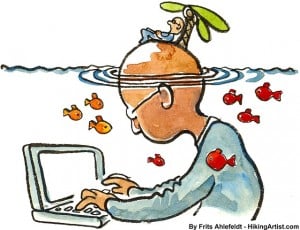 A tool that you don’t have to go out and buy. Here is one internal communication tool that we all were born with.
A tool that you don’t have to go out and buy. Here is one internal communication tool that we all were born with.
Olaf (the snowman from Frozen) finds himself dreaming about what summer will be like — even though he clearly can never be in summer. He sings, “Bees'll buzz, kids'll blow dandelion fuzz - And I'll be doing whatever snow does - In summer.” What are your employees dreaming about? and is it logical?
No matter what they are day dreaming about there is no doubt that through out the day they are dreaming. The Harvard Gazette says, “people spend 46.9 percent of their waking hours thinking about something other than what they’re doing, and this mind-wandering typically makes them unhappy.” Your day dreams may cause you to feel less productive, or easily distracted. Day dreams can be a constant reminder of things you don’t have. However, I am convinced though that daydreaming is a part of our daily lives and helps us to be our best.
The Science
So how do daydreams work? What makes them different than our normal dreams? And how can we control them?
National Geographic tells us that our brains are constantly reacting to nerve impulses, we have known this since the 90’s, but what happens during that idle state? Daydreaming is a common term for the phase when your brain is in an idle state. You have not reached a state of REM (rapid eye movement) but you are not quite awake either.
Rebecca Turner, founder and editor of World of Lucid Dreaming, gives us a better understanding about the difference between daydreams and “night dreaming.” During the day we are more likely to slip away and fantasize about the future, remember the past, or just let our brain wander a little. During the evening when we have reached a full state of REM we are likely to completely leave the world (mentally) and enter a dream world.
How does dreaming relate to the workplace and what does it mean for you and your employees? Daydreaming is the internal communication tool that we all were born with that will help your office. Daydreaming can improve creativity, productivity, and organization.
Creativity
It can be a struggle to be constantly creative. Working your typical 9am - 5pm, Monday - Friday can be put a real damper on your creativity. Many fear that daydreaming is a waste of time, but really it can help! Let your mind wander for just a few moments before your next big project. Allowing your mind to wander just for a little while may spark an idea that otherwise you would have missed.
Productivity
Daydreaming is your quick break for your brain. Working all day without taking short breaks throughout the day will slow you down. According to DeskTime, a productivity app, 52 minutes of working and 17 minutes of break seems to be the perfect combination,. Spend a few of those 17-minutes daydreaming. Allow yourself to put your brain to rest throughout your day and when you come back from your daydreams your brain will be ready for the next task in your day.
Organization
We often daydream about things that we so desire — like Olaf dreaming of summer. Our thoughts can keep our goals organized. It is easy to create a goal, create a plan to achieve that goal, and then get lost in time. Maybe one of your big goals got pushed aside, daydreaming will remind you of those big dreams, making sure that all your dreams come true.
“When life gets rough I like to hold onto my dreams,” said Olaf, and you should too. When your day is getting overwhelmed daydream. And, encourage your team to do the same. Daydreaming is the internal communication tool we were all born with. So start dreaming and your team will soon be creative, productive, and organized.





Leave a Comment